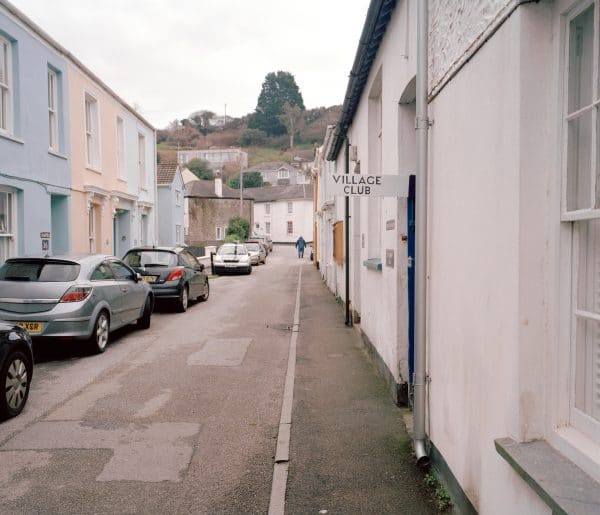Photos by Matthew Hawkey
On Friday night in Constantine, an amphitheatre of benches enclose paper ghosts and nimble fingers. On the wettest windiest evening in February, cliffside, Lambreage Hall wears heavy velvet curtains like armour, enclosing a talk from the Goonhilly Heritage Society. A Sunday afternoon in Devoran, dancing feet beat out a retelling of Hansel and Gretel to an enraptured pool of cross-legged children.
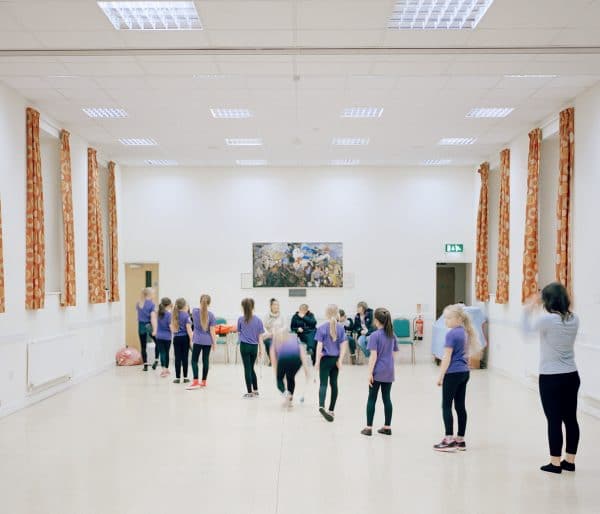
WI, bridge club and Brownies (both home-baked and yellow-jumpered), ‘village hall’ carries nostalgia-rich, pastel-paint-peeling associations. Think village halls, think slightly musty smell. Part fresh-baked cake; part petty politics. But perhaps that’s my own prejudice, scarred from a politically problematic turn as ‘Chinese villager’ in Staplegrove Village Hall’s 1997 panto. Because recently, I’ve been looking again, peering into the wood and linoleum palaces that lie behind churches, at the roads at the ends of the cul-de-sacs.
Everyday days
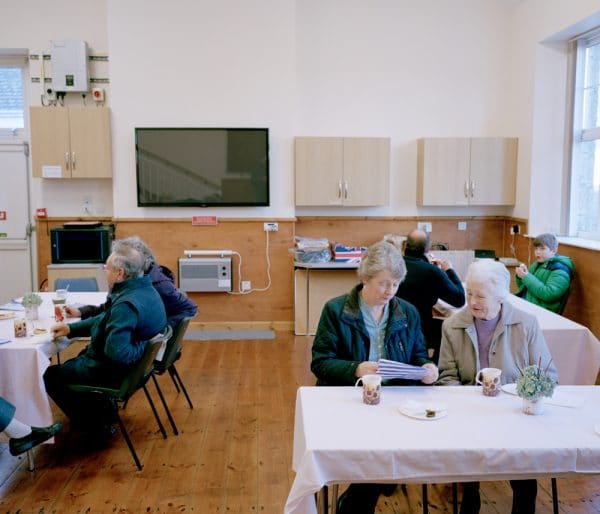
In a connected environment, built equally of online and offline space, ‘community’ is a slippery noun. Global community is no longer an oxymoron. Online communities, even brand communities exist. It’s a word so overused in marketing speak that, in an article undeniably about community, I’m reluctant to use it.
But, the humble village hall stands firm as the original icon of the concept, a physical manifestation of a networked hub of lives and relationships. 10,000 village halls exist across the UK. 90% are run entirely by volunteers. Nobody is there to make money. Most have a kitchen, a wide open room, sometimes two, and toilets. Some have a stage. They exist for the demographic that can reach them on foot. There are no village halls that everybody has been to. But everybody has been to a village hall.
Architecturally – at least on the surface – they tend to be nondescript. It’s their superpower. A space that belongs to nobody, can belong to everybody. Four walls, a bunch of plastic chairs and a kettle make up a site of potential. Family parties, politics and performance each take their turns on the floor.
‘There are no village halls that everyone has been to. But everyone has been to a village hall.’
I type ‘village hall’ into Twitter. Where photocopies once flyered phone masts, social media lets communities know what’s on. (Although in the Tinner’s Arms, Zennor, I clock a glorious pink panto ad with a call to action that just says: “for tickets, call Mary.”) I scroll through the last hours’ postings around the country: onion bhaji cookery class, weekend farmer’s market, a staff night out (’70s themed), Advanced Digital SLR workshop, a church tea, sax day, antiques sale, folk gig, mums in business, birding lecture, film screening; and a night of poems, songs and improvisation by a man named Ian.
A blank slate, the village hall isn’t a venue with a capital ‘V’. You might ‘go to The National’. You probably don’t ‘go to the village hall’. But you do ‘go to give blood’, ‘go to vote’, or ‘go to see that thing,’ while the space quietly props up your encounters and experiences.
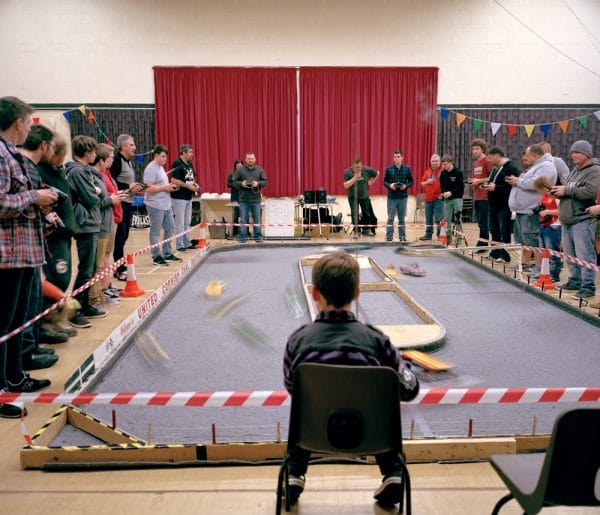
“It’s important to document the everyday because it’s often those things which get lost first,” says Matthew Hawkey, photographer and village hall enthusiast. Drawn by ordinary exteriors that hide myriad activities, his photos capture the full spectrum of community life. “It’s amazing how such a simplistic building can morph itself to fit nearly any use”, he says, “they bring so many different people under one roof.”
“It’s important to document the everyday because it’s often those things which get lost first”
Transportative nights
I turn up to Devoran on a grey Sunday afternoon in February and can’t find space to park. The hall is packed out for Hansel and Gretel by London-based Uchenna Dance. Tickets are sold by volunteers and I part with the rest of my change for some Victoria sponge before settling into a plastic chair at the back of the room. A bright-coloured dance show for kids, it’s a re-imagining of the classic fairy tale with a pertinent migrant narrative. The walls thrum with Ghanian pop and New York club sounds. African and contemporary dance moves gesture a story of being lost and found. The children are enrapt, the adults left to dwell on the social political picture that cuts through.
Across the country around 3000 halls are signed up to rural touring schemes. These schemes, like Cornwall’s Carn to Cove – who brought Uchenna here – source artists and subsidise performances, allowing village hall committees to take risks and bring something new to the community. When linked up as a network, for the right kind of performer, 3000 village hall floors make for one almighty stage.
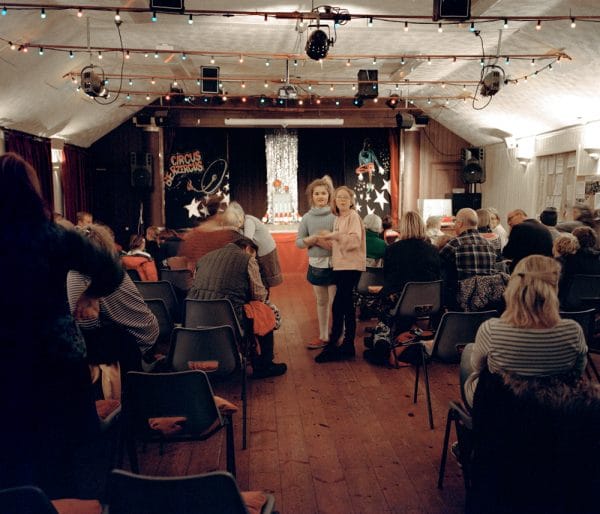
Once in the scheme, performances are put on a menu and showcased to the village bookers at ‘menu parties’ before the season. Halls pick their favourites, and tours are put together. The choice, and the show’s chance of success, comes down to each individual village.
“We rely on the villages to know their audience and what they like,” says Claire Marshall, Carn to Cove’s manager, “they have to see that little old lady in the shop the next day, if they put on something with full frontal nudity they might not enjoy it.” It’s a balance. The scheme’s subsidy also means a village committee can take a punt. “It is brilliant when the community surprises you with their choices, if they’ve booked something risky and it hasn’t worked out then we try and be flexible with the money.”
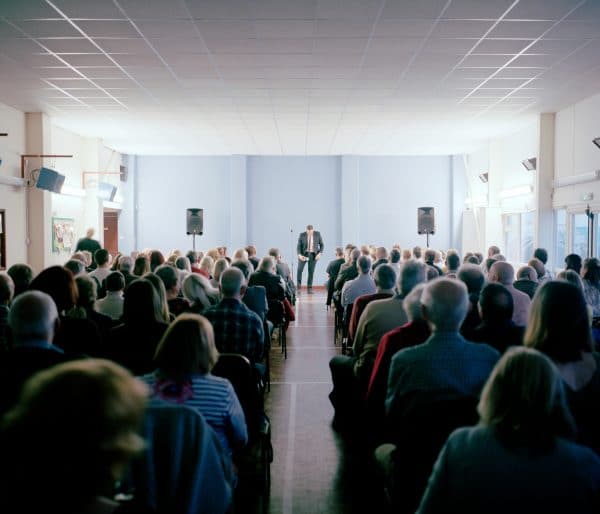
However avant-garde they may or may not be, supporting the movement of artists to the most remote parts of the country mean stories travel person to person. “Some parents today said it’s great to see other cultures represented in this community, which is fairly monocultural. We’re really keen to present diversity on stage both culturally and creatively,” says director Tim Smithies, “and when Carn to Cove started, there was a sense that rural communities had been completely forgotten about.” Chosen by the community, for the community, there’s a lack of pretension, or inaccessibility, even around the riskier choices. Shows aren’t chosen for show, they’re chosen for people. Particular people, known by face and name.
“they have to see that little old lady in the shop the next day, if they put on something with full frontal nudity they might not enjoy it.”
Creative spaces
Exceeding your local am dram expectations and working their way around pockets of the country, companies and creative minds are sparking off the intimacy and interaction of the village hall space to create work that couldn’t exist elsewhere. For the right kind of artist, small audiences and flexible spaces are a creative catalyst. “There are great choreographers on the rural dancing menu”, says Smithies, “choreographing for the big opera houses who thought – actually this is a really challenging space to think about producing great work.”
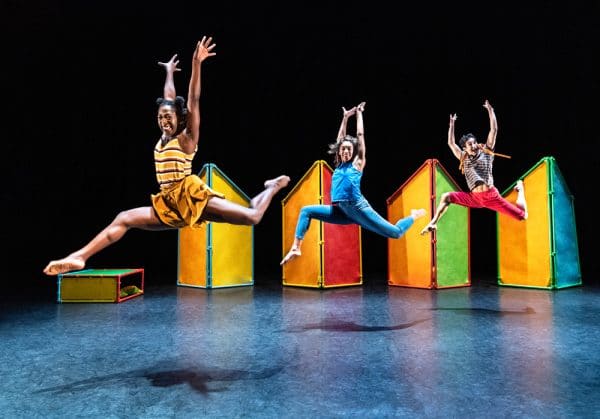
Uchenna Dance
Watching the Paper Cinema at the Tolmen Centre, Constantine (a community venue that’s expanded and adapted to audience appetite), or reading about participatory events like The Iranian Feast, I’m struck by the ways in which rural touring artists can harness small to make mighty. Creating live animation from paper, projected onto a screen, soundtracks performed then and there; Paper Cinema use the alchemy of stuff and Sellotape – it’s a magic that could never transfer to screen. Who needs special effects, when a hall full of people can collectively believe that some paper’s a ghost and a violin’s the sound of the wind? And it’s the collective belief makes that story an event.
“With dance, especially, you feed off the energy of the audience,” says Uchenna choreographer and director Vicki Igbokwe, “those little faces looking up at you in total awe – having interactions – it allows us to do the best possible job in terms of performing.” Those interactions are where live performance lives. Not only between performer and audience, but between audience members too. We’ve hit that word ‘community’ again.
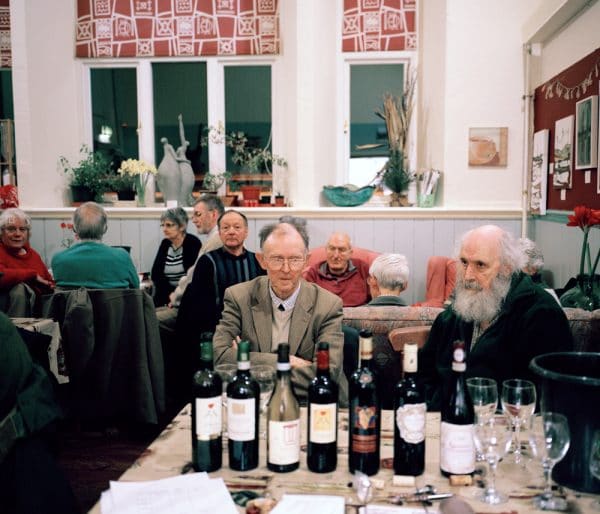
Cake for tea
Changing in the loos, dancing on the floor, showing your workings. It’s not for everyone. Even the tiniest theatre venue lets the artists leave out the back at the end. In a village hall, interaction extends beyond performance. Uchenna dance pack up while chatting with leaving parents and children. Later they’ll stay in the houses of people in the village. The artists have to know that what they’re letting themselves in for.
“There’s an intimacy that you have in village halls from the moment you walk in,” says Igbokwe, “the hospitality, the person that’s coming to meet you, there’s always cake, always beautiful soup and cheese and bread. From the moment you land in whichever town or village you’re in, the experience is totally unique to that place.” There are misunderstandings and awkward moments too. She laughs, “when we did the first one it was like, ‘Oh this is what Claire meant. You arrive and there’s always that moment, ‘Oh, is it going to be too different? Are people going to be receptive?’ But we know what to expect now, we know that anything can come at us and we can make it work, we love it.”
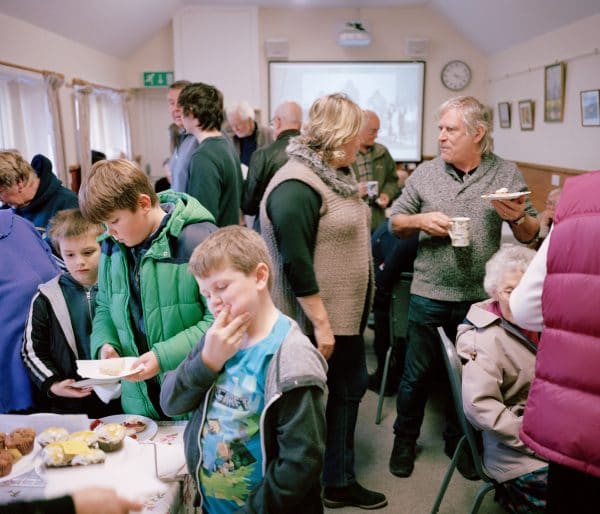
When we talked to Kyla Goodey and Sally Crooks from Trifle Gathering they agreed, “what’s beautiful about village touring is that there’ll be a woman who’s going to nag a lot of people,” Goodey says, “without those women we would definitely not be here, they’re going round going – ‘You’ve got to get a ticket for this’. They bring them all in and they make a trifle and they do a little bar. They are the most special performances for us. We love them.”
Specialised services and a world of digital choice are teaching us to compartmentalise and streamline our needs. Netflix for drama, Tinder for dating, Whats-app for catch-ups. Deliveroo for food. But we forget a night out is more than the sum of its parts. “I spend a lot of my social life going out to village halls where I’m not a member of the community,” says Marshall. “It’s quite a privilege, sitting there with everybody. They all know each other, they’re all having catch-ups in the interval. Seeing them enjoying something that they wouldn’t have seen normally, that’s on in their village. I can’t not get a kick out of that.”
It doesn’t have to be performance that gets the community under one roof. One of Hawkey’s favourite discoveries was the Angarrack village hall ‘indoor helicopter flying club’. “The club was a mixture of young and old, good and awful flyers,” he says, “but it was just a lovely environment. I don’t think indoor helicopter flying was any of their lifelong passions, it just gave them all a chance to spend time together. It epitomised everything I loved about the village halls. Community and escapism.”
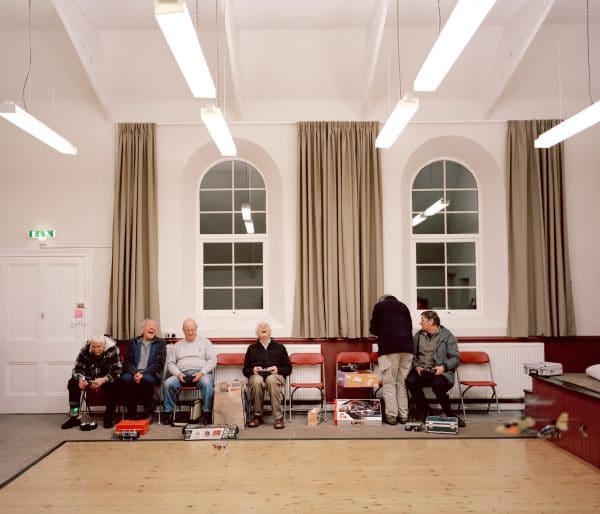
"community’s still very strong and more and more the village hall seems a resource for community activity.”
Alive and thriving
This could read like a ‘save the village hall’ polemic. But it wouldn’t be necessary. The majority are alive and thriving, particularly in Cornwall. By their nature they’re hidden, the hall’s fame needn’t extend beyond the parish. But – from exposure to new stories, to providing vital services – depending on the volunteers behind them, their effects can be quietly transformative. “It only needs one or two people to step up and things can transform in communities that are divided or poor,” says Smithies, “we’re in one of the poorest parts of the country here but community’s still very strong and more and more the village hall seems a resource for community activity.”
The stats back up Smithies’ hunch, between the ’80s and the ’00s village hall use increased threefold. Things may have changed. We travel more. Venues like Constantine’s Tolmen Centre have started to adapt, to foster a community that’s based more on shared interests than postcodes. But the spaces are doing what they’ve always done, albeit in flexible ways. Bringing experiences to people, and bringing people together.
So let’s call this my ‘appreciate the village hall’ polemic instead. Quietly radical with their open doors, serving tea from hatches to all, they’re the interdisciplinary, cross-cultural, modern flexi-arts breakout spaces that Google hasn’t thought of yet. They’ve been there this whole time. Go and see what’s on, and get in line for the cake.
